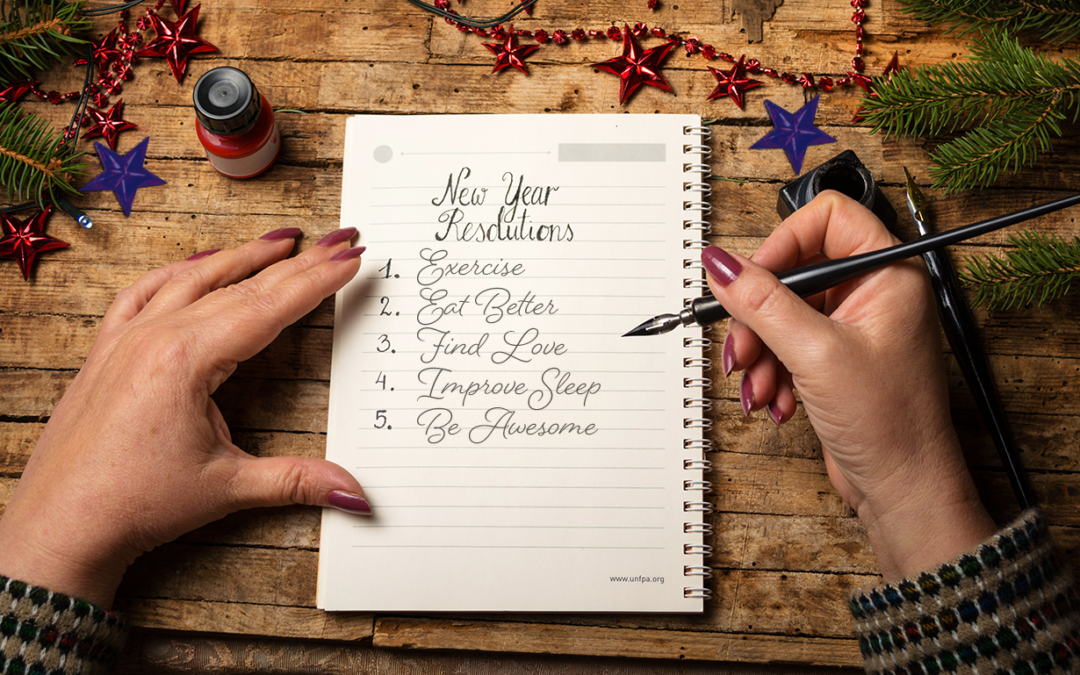
New year, new you…right??
The Secret To Making Resolutions That Actually Stick
It’s January — and we’re back to our routines. In line at the supermarket, you’re hit by all the articles on health and wellbeing. You’ll go back to the gym. Dust off that yoga mat (or Peloton). Seal the deal with a big client/see your best friend more/eat less carbs… You’ve got your resolutions. New year, new you, right? And you are on it.
Sound familiar?
How many times have you started the year — with the best intentions — only to peter out in February or March? Slowly lose interest. Feel exhaustion return, and go back to the same old habits.
Truth is, you can have all the goals in the world. But if you don’t have the right foundation in place, it’s all for sh*t — or at least, you’re not going to be able to up-level your game. Dish out the work. Be available to your friends and family. Whatever the aspiration, if you don’t take care of yourself…
Your goals are going to flatline.
So, how can we make sure we’re not only on it now — but stay on it throughout the year?
This month’s post is all about the one big secret you need to conquer to stay on top of those goals. The one thing — above even nutrition or movement — that if mastered, is a game-changer for giving back clarity, a sense of purpose and making sure we’re firing at optimal levels…
(And it’s a problem I see more and more of you struggling with, desperate to find a solution…)
The answer? Sleep.
As human beings we have natural rhythms embedded in us. Back in the day, before the lightbulb was invented, we’d just sleep when it was dark. And now? We’re taught to go, go, GO! And as a result, our circadian rhythms are shot.
You probably felt it over the holidays. And ladies, it’s hard to admit, but we’re faced with a double whammy — we no longer have our youth to pull us through those late nights. We can’t just pull on a pair of leg warmers, plug in a Walkman and bounce right back (what can I say, I love the 80’s).
And no, it’s not just that your body’s changing — we groove to consistency. Maybe you wake up like clockwork each morning at 3am, needing the bathroom? You have a hot flash, and your mind starts whirling. We stare at the clock, getting back to sleep is so challenging!
4 years ago I struggled with exactly this. I’d survive on 5 hours a night. (And probably shouldn’t have been driving in the afternoons…) But when 8 or 9 hours is considered the norm, the fact is probably 90% of us are deprived sleepwalkers…
And so I know how important it is to share the habits I’ve used — to break destructive patterns, and help you live life to the fullest. So you can show up consistently and keep your goals alive month after month (and not just in January.)
7 Steps You Can Take TODAY to Help You Recalibrate:
- Caffeine. This is a biggie. Listen, I love a cup of coffee (maybe even 2 or 3!) But pushing the envelope isn’t a good idea. You can indulge — but stop after 3pm, and give caffeine a chance to leave your system.
- …And alcohol. I hate to be a Debbie Downer, but though soothing in the moment, that glass of wine after a long day stops you from reaching the really deep, restorative sleep that truly rejuvenates. If you can go without, do.
- Avoid blue light. (Oh yeah — just like the electric blue eyeshadow you wore in your teens, blue light after dark is not going to suit you anymore!) Unplug your phone, maybe leave it in another room if you can. My secret? Set an alarm and remind yourself to shut your phone down.
- Stop that Nextflix binge 2-3 hours before hitting the sack. The stimulation makes winding down that much harder. So save the new reboot season of Sex and the City for early evening hours only…
- Be honest, what time do you stop working? (That includes checking your phone, deliberating over a response.) When my children were younger I’d put them to bed, and get back on my game for 2-3 hours. This was a terrible idea! Giving yourself time to wind down should be your number one priority.
- Take a power nap. It might not be the American way to take a break in the middle of the afternoon, but your body will thank you for it. Get out of the habit of needing to be on it, every minute of the day.
- Keep your room temperature down low, no higher than 68°. And that means no exercising or big meals before bed that only stimulates and raises our body temperature (and nix the sweaters and socks under the covers).
But what if you’re one of the many women who come to me tired and exhausted — unable to switch off your anxieties, thoughts and worries? The techniques above will certainly help, but you may require another layer — to truly quiet the mind and signal to your body, that it’s time to flip off the switch…
Go-To Rituals to Quiet the Mind
First take five minutes. I gently potter about the kitchen and put away the dishes. Whatever routine might be personal to you, to signal that the day is done.
Take a warm bath, dim the lights, light a candle. Heating your body up, to then cool it down, is a relaxant and sets you in the mood for sleep.
Make your bedroom a sanctuary. It should be dark, calm and cool. Your bedroom should be for 2 things only — sleep… and sex! No TVs, phones, nothing else. That’s it.
Establish a 3-5 minute ritual of breathing exercises. For me, it literally signifies flipping the switch… Because otherwise I know I’ll sit in bed and think about ideas for the day ahead, or that person I have to get back to. I’m running down the list, right? And that is not going to work.
Instead breathing allows us to tap into our parasympathetic nervous system — accessing calm, rational thinking. And box breathing (tracing the outline of a box as you breathe) is a very simple place to start:
- Breathe in for 4, hit one corner
- Hold for 4 until you reach the next
- Exhale for 4 seconds hitting the next corner
- Hold for 4 before repeating
And my final ritual for sleep? A nighttime gratitude practice. It’s a game changer — I talked about this back in November, but it bears repeating. Take a piece of paper and pen (no screens, remember!) and list everything you did throughout the day, from taking out the garbage to picking up dinner or conversations you’ve had. Now take that list, and flip it — look only through the lens of gratitude, and write each one down. Only seek the good. Because honestly? Gratitude is a superpower, it’ll squash any negativity you feel dead in its tracks.
XO
Holly
P.S. So, what about you? Hit reply…I’d love to hear how you prepare for sleep — or which practice(s) I share resonates with you?
P.P.S. Please know this is NOT about perfection, just adding any one or two of these practices can make a big difference. You better believe there are some days I fail my caffeine curfew and nights a Netflix binge takes over. BUT those days are now far and few between.


